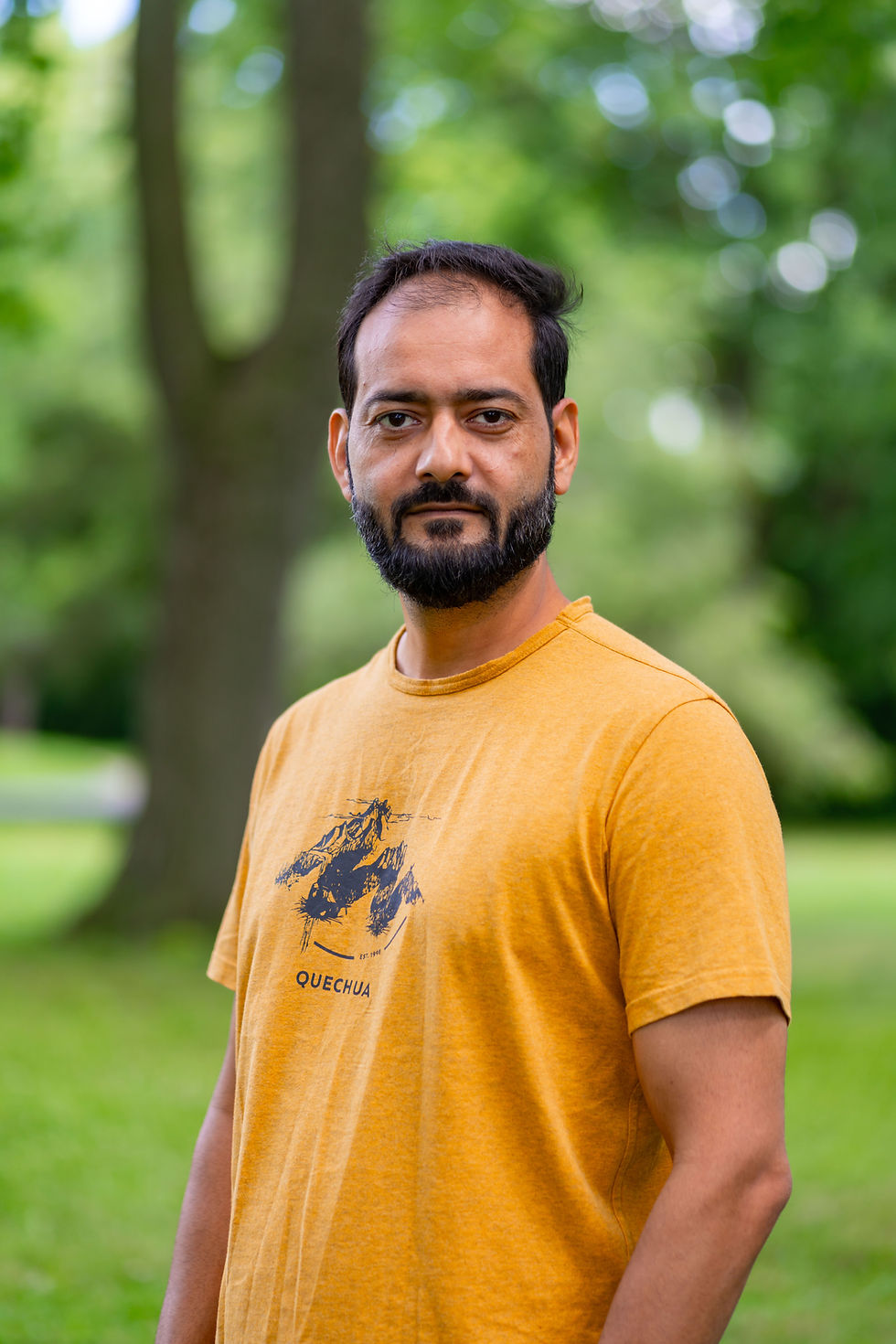Apoorv Sharma, PhD
Postdoctoral Researcher
My name is Apoorv, I am a postdoctoral research fellow in the Brandon lab at McGill University, Montreal, Canada. I am interested in understanding how the brain infers the external and internal stimuli-based representation of the environment affecting spatial memory and cognition. Before joining the Brandon lab, I completed my PhD with Dr. Yoganarasimha Doreswamy at the National Brain Research Centre, Manesar, India. My PhD research focussed on investigating the role of Subiculum, Presubiculum and Parasubiculum (also called the Subicular Complex, SC) in spatial information processing in awake-behaving rats using multi-tetrode neurophysiological techniques. In my postdoctoral research work in Brandon lab, I plan to further investigate the SC’s role during reorientation of the animal's internal spatial representation. For this, I use in-vivo miniscope calcium imaging and neurophysiology techniques coupled with optogenetic and chemogenetic manipulation methods along with advanced computational methods and behavioural analyses.


Apoorv Sharma, Indrajith R Nair, Yoganarasimha Doreswamy. (2022) Attractor-like Dynamics in the Subicular Complex. Journal of Neuroscience 26 August 2022, JN-RM-2048-20; DOI: https://doi.org/10.1523/JNEUROSCI.2048-20.2022
Published Papers
2009-21: PhD student in Dr. Yoganarasimha Doreswamy’s lab, National Brain Research Centre, Manesar, India. Thesis title: “Spatial Representation in Subicular Complex Neurons: in-vivo neurophysiological study in freely moving animals.”
2008-09: PhD Coursework, National Brain Research Centre, Manesar, India.
2006-08: M.Sc. Biosciences, Jamia Millia Islamia University, New Delhi, India.
2003-06: B.Sc. (Honours) Biomedical Science, University of Delhi, New Delhi, India.
Education
Awards, Recognition
Okinawa Institute of Science and Technology (OIST) Travel Grant 2019.
International Neuroinformatics Coordinating Facility (INCF) Travel Grant 2012.
Council of Scientific and Industrial Research - Junior Research Fellowship, National Eligibility Test (NET-JRF), 2009.
University Grants Commission - Junior Research Fellowship, National Eligibility Test (NET-JRF), 2007.
University Grants Commission - Lectureship, National Eligibility Test (NET-LS), 2007.
Apoorv Sharma, PhD
Postdoctoral Researcher


2009-21: PhD student in Dr. Yoganarasimha Doreswamy’s lab, National Brain Research Centre, Manesar, India. Thesis title: “Spatial Representation in Subicular Complex Neurons: in-vivo neurophysiological study in freely moving animals.”
2008-09: PhD Coursework, National Brain Research Centre, Manesar, India.
2006-08: M.Sc. Biosciences, Jamia Millia Islamia University, New Delhi, India.
2003-06: B.Sc. (Honours) Biomedical Science, University of Delhi, New Delhi, India.
Education
Awards, Recognition
Okinawa Institute of Science and Technology (OIST) Travel Grant 2019.
International Neuroinformatics Coordinating Facility (INCF) Travel Grant 2012.
Council of Scientific and Industrial Research - Junior Research Fellowship, National Eligibility Test (NET-JRF), 2009.
University Grants Commission - Junior Research Fellowship, National Eligibility Test (NET-JRF), 2007.
University Grants Commission - Lectureship, National Eligibility Test (NET-LS), 2007.
Apoorv Sharma, Indrajith R Nair, Yoganarasimha Doreswamy. (2022) Attractor-like Dynamics in the Subicular Complex. Journal of Neuroscience 26 August 2022, JN-RM-2048-20; DOI: https://doi.org/10.1523/JNEUROSCI.2048-20.2022